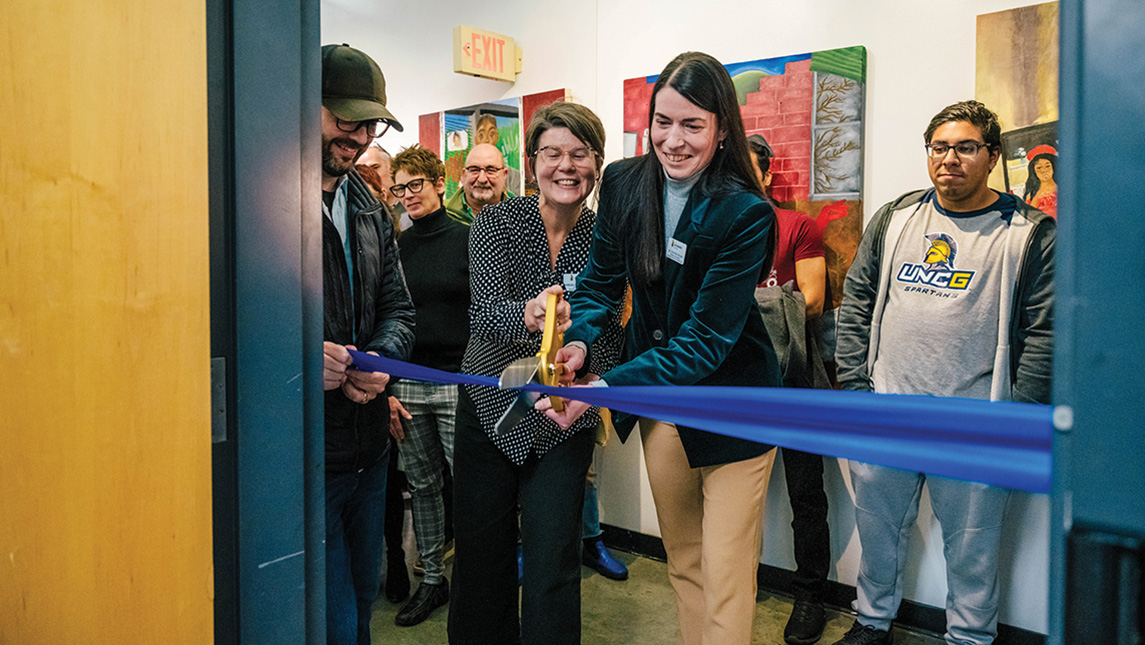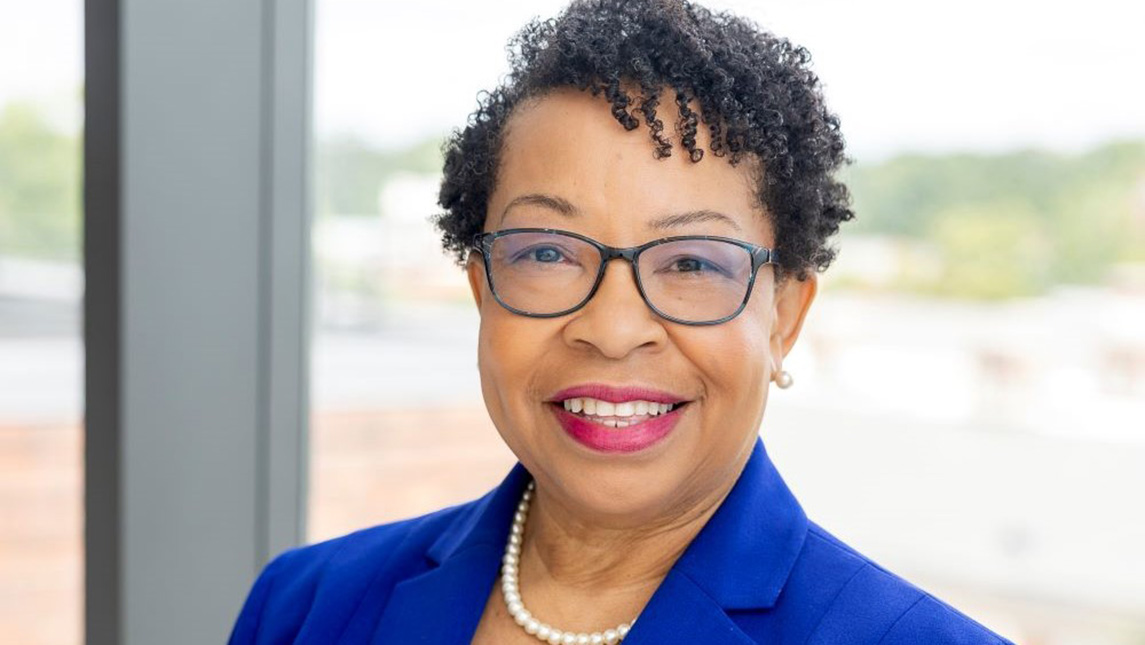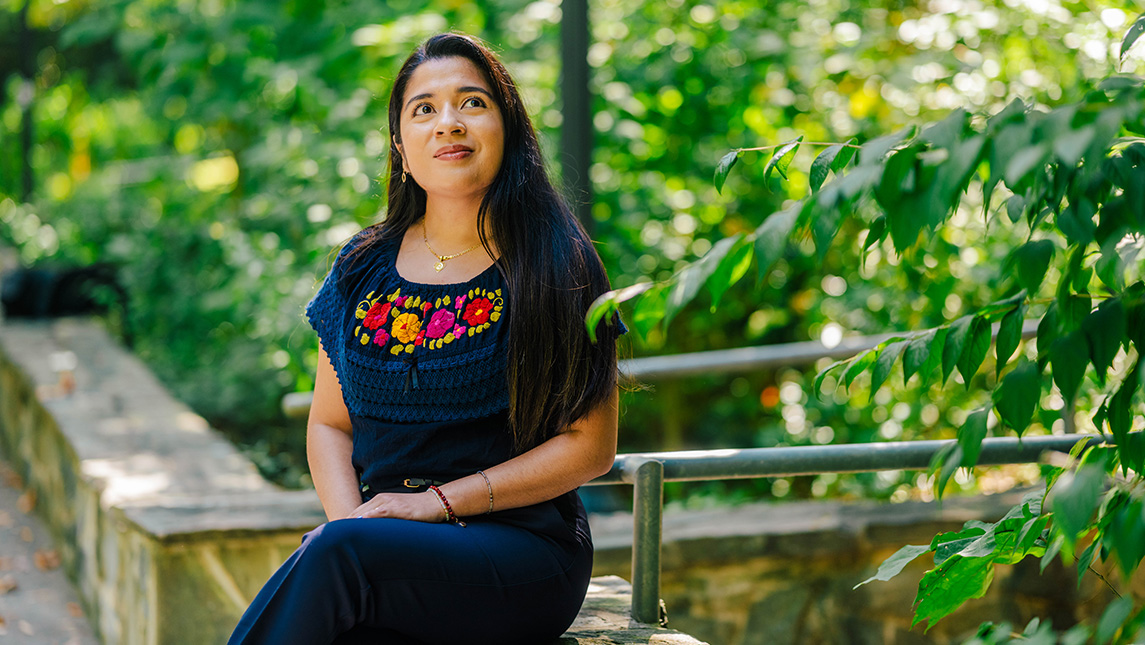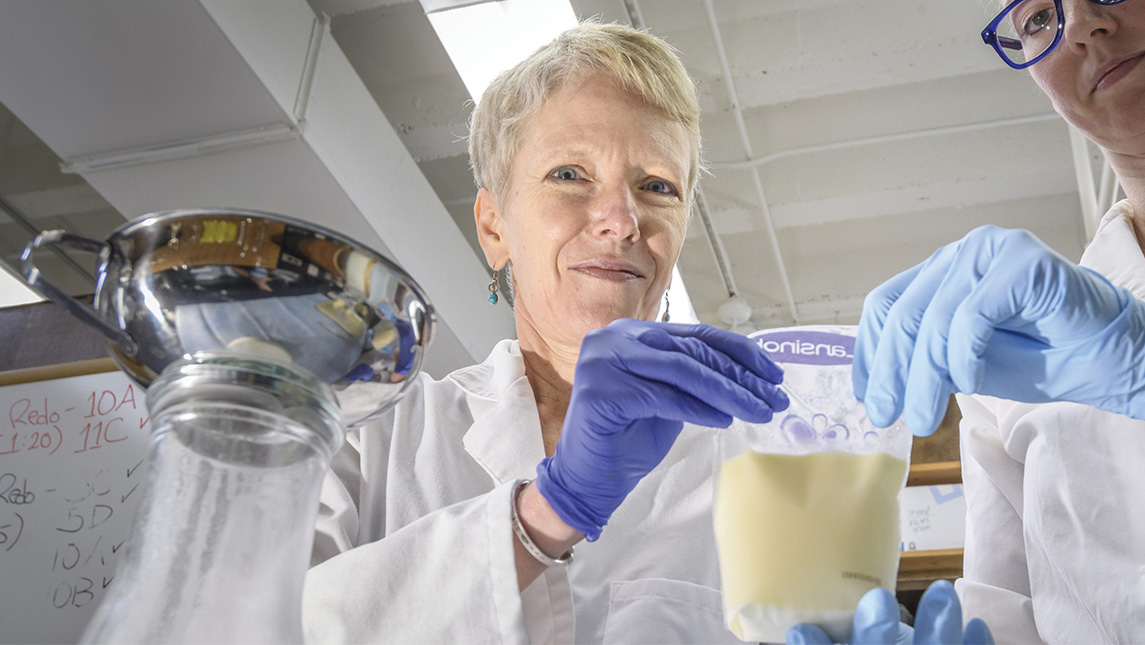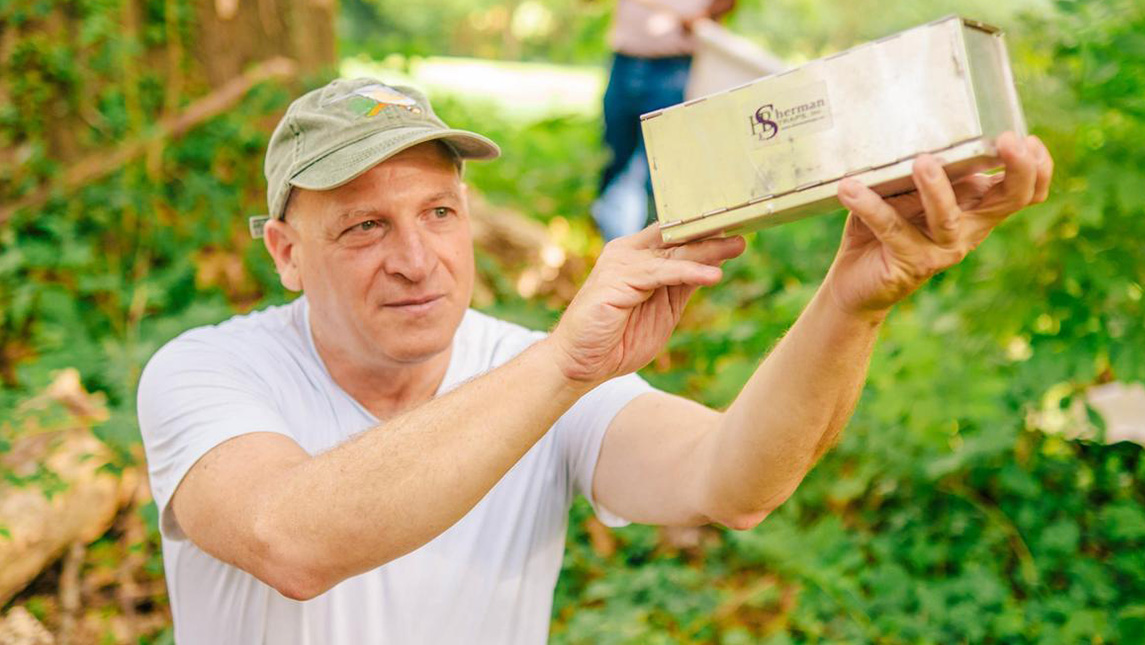UNCG’s Dr. Aaron Terranova on the Lessons of the SoCon Tournament
With 8:28 left on the clock in UNCG’s first match in the SoCon Tournament against Virginia Military Institute, and the Spartans down by three points, disaster struck. Graduate forward Malik Henry, the guy some fans call “Superman,” went down hard on the floor of Harrah’s Cherokee Center in downtown Asheville. And he stayed down. That’s when UNCG Kinesiology Professor Dr. Aaron Terranova, ’00, M’08, and his team sprang into action.
“That’s why we have so much medical personnel here,” Terranova says afterwards. “If something does happen, we’ve got it all covered. We had literally seven people ready to go. ‘What do you need? How can we help you?’”
Terranova, who is also Program Director for the University’s Master of Science in Athletic Training, is not just looking out for UNCG players. He works as a medical liaison for the SoCon Tournament, coordinating each team’s athletic trainers with medical care through Mission Health, scrambling resources when an injured player needs to be taken back to the locker room, and administering emergency first aid as needed. In the worst cases, he can help transport a player to the hospital.
“We’re always on the lookout for the big injury,” he says, “bones sticking out or cardiac or neck injuries are the scariest.” Injuries of those types, he says, rarely happen but they’re always ready for them.
Now working his seventh SoCon Tournament, he says one of the more memorable injuries he’s seen in his time required as much janitorial duty as medical care. A player had taken a hard elbow to the face as he went up for a rebound, breaking his nose. He went up and down the court four or five times before anyone noticed, Terranova remembers. By that time, there was blood all over the hardwood.
“For 20 minutes I was going up and down the court, looking for spots of blood,” he recalls. “I was spraying, mopping, mopping, spraying. I’ve seen broken bones and dislocations, but this one was more comical than anything. You prepare yourself for anything in this line of work, so when it does happen you know exactly how to handle it.”
One of the most satisfying parts of this post, he says, is watching a player make it back from an injury and knowing he had a hand in the recovery. But the most gratifying is giving his UNCG kinesiology students the kind of professional experience they’ll need to move on in this business.
“I love being able to bring my students to the SoCon Tournament,” he says. “A lot of them want to work in Division I, and they get to experience what it takes to work a big, major tournament. There are a lot of moving parts. And the students can see me as a professor who is still working with patients. So, when I go back to school after Spring Break, I can tell them, ‘Here’s what we saw at SoCon this year: We saw an elbow injury; and here’s how you handle that.”
These real-life examples are what bring his classroom lessons to life.
“Being able to bring clinical and personal experiences to the classroom, the students respond to that,” he says. “I think they like that.”
Story and photo by Brian Clarey, University Communications








